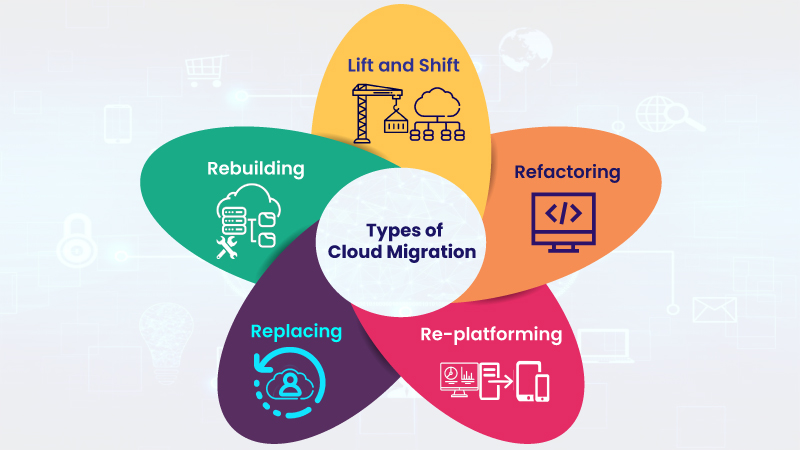Cloud migration services are now essential for organizations looking to remain flexible and competitive in the fast-paced digital world of today. These services make it easier to move a variety of IT resources from on-premises hardware to the cloud, including databases, apps, and whole infrastructure installations. Businesses can now grow operations more effectively, be more flexible, have better disaster recovery capabilities, and spend less on IT overhead because of this shift. In a market driven by technology, adopting cloud migration services is crucial for businesses as it enables them to quickly innovate and leverage cutting-edge computing technologies.
The five different categories of cloud migration services listed below can assist companies in achieving their objectives for digital transformation.
Rehosting (Lift and Shift)
Application rehosting is the process of transferring programs and the data they contain to a cloud environment without altering the programs directly. This procedure, which is sometimes called “lift and shift,” is well-liked due to its quickness and ease of use. Cloud computing is typically used by businesses who wish to take advantage of its benefits right away without having to make any changes to their current applications. Physical hardware costs can be reduced and scalability may be raised with this method.
Refactoring
Refactoring is the process of modifying an application’s code to make it more compatible with the cloud environment without affecting the program’s functionality on the outside. Businesses who want to use cloud-native capabilities in their apps to increase their scalability and resilience select this kind. Refactoring can yield more substantial long-term benefits than rehosting, including reduced operating expenses and enhanced cloud performance, although being more complicated and expensive.
Replatforming
Replatforming is modifying apps slightly to make them more cloud-friendly without completely redesigning them. A more cloud-service-friendly database management system for the application may be one way to achieve this. Replatforming allows for some cloud optimizations without requiring a significant investment in application redesign, thereby striking a middle ground between rehosting and refactoring.
Repurchasing
Repurchasing, which is sometimes interpreted as shifting to a different product, is the process of transferring an existing application to a cloud-native alternative. For example, a business may decide to switch from an on-premises CRM system to a cloud-based SaaS program like Salesforce. This strategy may guarantee that organizations take advantage of the newest technology developments while significantly lowering the complexity and expense of managing IT resources.
Retiring
Companies frequently find that some of their apps are redundant or no longer needed as part of their cloud migration plan. Retirement of these apps might reduce expenses and simplify operations in certain situations. Assessing the IT portfolio thoroughly to ascertain the true worth and use of each program is necessary before deciding which ones to retire.
To conclude
Services for cloud migration provide a range of strategies to meet diverse corporate objectives and demands. Each service has its advantages and can be customized to maximize innovation, cost-effectiveness, and operational efficiency. Knowing these alternatives will be essential to developing a plan that fits with long-term corporate goals and the constantly changing digital landscape as businesses continue to move to the cloud.

